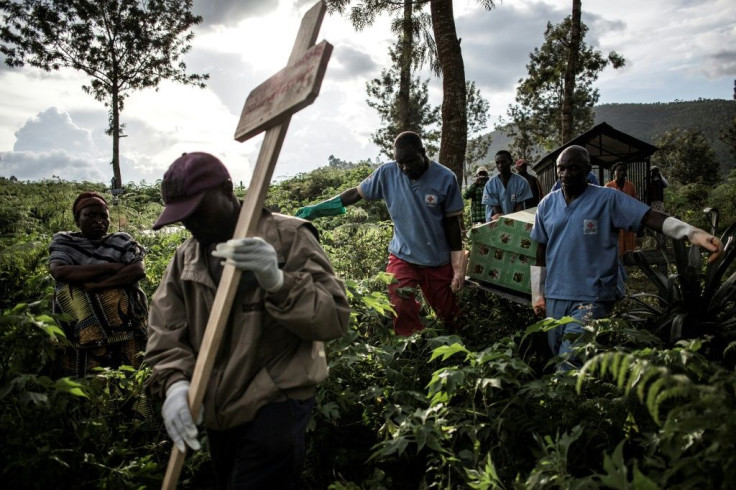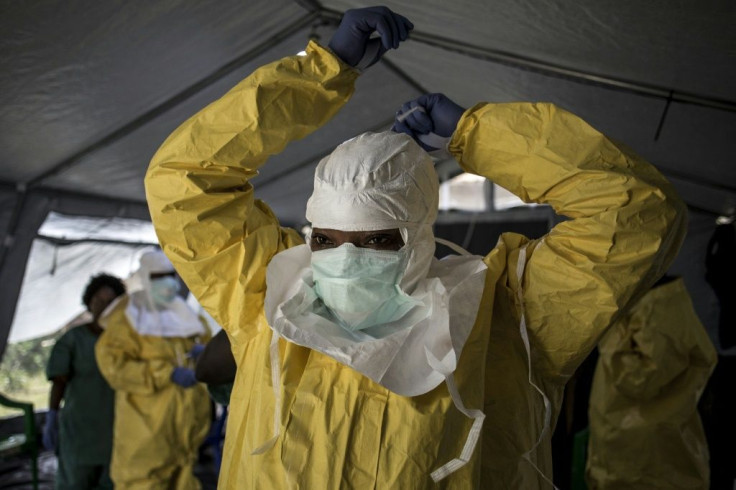Ebola: Profile Of A Killer

The Democratic Republic of Congo on Thursday officially declared an end to an epidemic of Ebola that broke out in the east of the country in August 2018 and claimed 2,277 lives.
Here is a factfile on the disease:
Ebola haemorrhagic fever was first identified in 1976 after Belgian-led scientists probed a string of unexplained deaths in northern DRC, then known as Zaire.
The disease was named after a river nearby.
The virus that causes Ebola is believed to reside in bats, which do not themselves fall ill but can pass it on.

Chimpanzees, gorillas, monkeys, forest antelope and porcupines can become infected, and humans who kill and eat these animals can catch the virus through them. Infected humans, in turn, contaminate other people through contact with their body fluids.
Five viral strains have been identified: Zaire, Sudan, Bundibugyo, Reston and Tai Forest.

The symptoms are severe: high fever and muscle pain followed by vomiting and diarrhoea, skin eruptions, kidney and liver failure, internal and external bleeding.
The average fatality rate is around 50 percent but this can rise to 90 percent for some epidemics, the World Health Organization (WHO) says.

Ebola is difficult to contain, especially in urban environments.
People who are infected do not become contagious until symptoms appear, which is after an incubation period of between two and 21 days.
Patients and people who have been in contact with them are routinely isolated.
Medical personnel have to be meticulously protected with disposable full-body plastic suits, masks, goggles, gloves and disinfecting sprays.

The worst Ebola epidemic started in December 2013 in southern Guinea and spread to the neighbouring West African countries of Liberia and Sierra Leone.
It claimed the lives of more than 11,300 people from the nearly 29,000 registered cases, according to WHO. It declared the epidemic over in March 2016.
More than 99 percent of victims were in Liberia, Guinea and Sierra Leone.
After the latest DRC outbreak, health authorities there began issuing the experimental rVSV-Zebov vaccine on a large scale for the first time.
Developed by the US pharma group Merck, the vaccine, "prequalified" by the WHO in November 2019 for approval, was introduced after earlier trials found it safe and effective.
More than 300,000 people have been immunised.
A second experimental vaccine was introduced in October 2019, produced by a Belgian subsidiary of Johnson & Johnson and has been administered to more than 20,000 people as a precaution in areas of DRC from where the virus is absent.
The latest epidemic was declared on August 1, 2018 in eastern DRC's deep troubled province of North Kivu, on the border with Uganda, and spread to neighbouring Ituri and South Kivu.
The WHO in July 2019 declared the outbreak a "public health emergency of international concern," a rare designation only used for the gravest events.
As the epidemic eventually waned, the DRC's 11th outbreak was announced on June 1, occurring a thousand kilometres (600 miles) away in the northwest.
© Copyright AFP {{Year}}. All rights reserved.





















